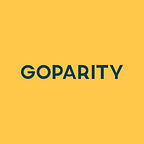Humans have always been fascinated with oceans. Stories, myths, and fantasies have been created about it, which even today feed the imagination of those who see and feel the sea.
Unfortunately, since the last century, excess fishing has led to the depletion of stocks. These organisms are part of a whole that also includes humans.
There will always be capture; there will always be predator and prey. However, it is our responsibility to minimize our impact on this (still) Blue Planet and not destroy its future.
Aquaculture helps in this process. Nonetheless, there is good and less good aquaculture.
What makes the project Oceano Fresco fit into the category of good aquaculture?
Firstly, because the aquaculture of bivalves has less environmental impact because no artificial chemicals or feeds are used, they have a filtering function that improves the quality of the water and their shells capture and use CO2 in their formation.
Furthermore, because it focuses on the cultivation of a European species of clams, whose population has reduced a lot in their natural habitat due to the monoculture of an invading species from Asia.
Finally, because of the origin of the clam seed, which is not extracted from its natural habitat but cultivated in the bio-marine centre, ending the process growing until adult size in the western Algarve sea.
In other words, the clams will grow in an open, free, and wild sea. This makes the whole cultivation process a lot more dynamic and interesting.
What is the process of aquaculture?
In simple terms, imagine that you are a seagull gliding in the northerly wind, characteristic of the western Algarve region, and when looking below you see a big grid, where the edges are anchored down and the rest is submersed beneath the water’s surface. Seen from the side, as if we were a dolphin, we would see a simple horizontal cable, close to the surface and attached to the seabed with an anchorage system.
On the horizontal cable, we place so-called Chinese lanterns which have the clam seeds inside. And that’s where the magic happens. Firstly, because we see a grain of sand turn into an adult clam. And secondly, because whilst this is happening, there is an ecosystem of microorganisms (and others not so micro), that grow along the cables and buoys (which keep everything close to the surface). It is fascinating to see life grow where before there was just salt water. In this same place we could have larvae from barnacles, sea urchins, tuna (and even dolphins and whales). When we create something that can serve as a substrate or future home, the larvae, whose life cycle would probably end if they didn’t find a place to grow, now have an opportunity there, even in the middle of the desert ocean. Algae, mussels and earthworms now play a role as if they were in a reef. In this new production zone, there is a dynamic which helps produce protein for human consumption with the natural produce from a reef. It is amazing to see shoals of bream and mackerel caught by gannets who hit their targets when diving accurately into the sea.
I get a great feeling when I see the great satisfaction on the faces of those who spend thousands of hours at sea looking after these small and tasty organisms, at the end of each cycle. This is because they know that they created a high-quality product and that they are providing anyone who is lucky enough to eat these little pieces of the Algarve sea with an incredible gastronomical experience.
In conclusion, yes, the sea can feed us sustainably.
Rodrigo Clímaco
Masters in Aquaculture and Fishing and graduate in Marine Biology…and a lover of the sea! Manager of the Oceano Fresco off-shore farm.
Check out the project and invest in blue economy👇🏽
